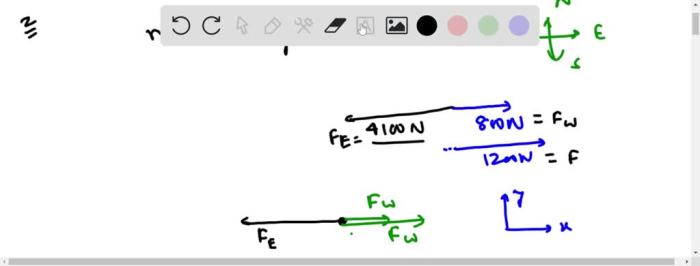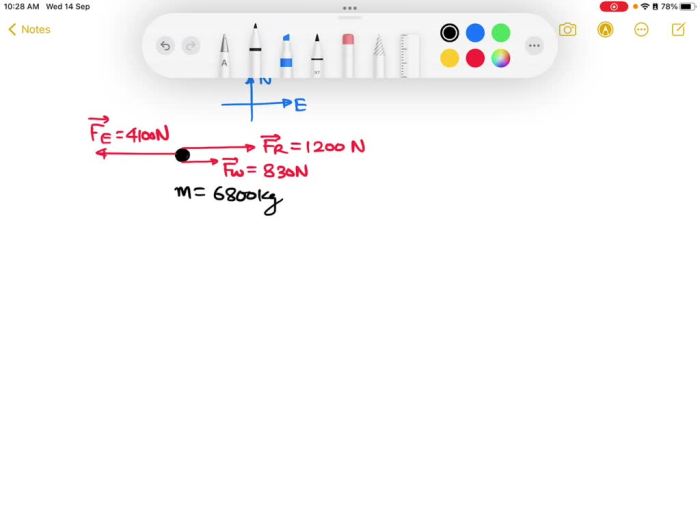A boat has a mass of 6800 kg – A boat with a mass of 6800 kg is a vessel that presents a fascinating study in the interplay between mass and water dynamics. Mass, a fundamental physical property, plays a pivotal role in determining a boat’s buoyancy, stability, performance, and safety.
Understanding the implications of mass on boat design and operation is essential for ensuring optimal performance and safe navigation.
As we delve into the intricacies of mass in boat design, we will explore the concepts of buoyancy and Archimedes’ Principle, examine how mass distribution affects stability, and investigate the trade-offs between mass and other performance factors. We will also discuss the safety implications of mass, highlighting its influence on seaworthiness and the ability to navigate challenging conditions.
Physical Properties of a Boat

The physical properties of a boat play a crucial role in determining its performance and stability in water. Among these properties, mass stands out as a particularly significant factor influencing a boat’s buoyancy and stability.
Mass and Buoyancy
Mass, a measure of the amount of matter in an object, directly affects a boat’s buoyancy. According to Archimedes’ principle, an object submerged in a fluid experiences an upward buoyant force equal to the weight of the fluid displaced by the object.
In the case of a boat, the buoyant force acts upwards, counteracting the downward force of gravity. The greater the mass of a boat, the more water it displaces, resulting in a stronger buoyant force and increased buoyancy.
Mass and Stability
Mass distribution also plays a vital role in a boat’s stability. A boat’s stability refers to its ability to resist capsizing or overturning. Proper mass distribution ensures that the boat’s center of gravity is low and centered, contributing to stability.
When a boat’s mass is unevenly distributed, it can create an imbalance that makes the boat more susceptible to tipping over. Factors such as the placement of heavy equipment, cargo, or passengers can significantly impact the boat’s stability.
Buoyancy and Archimedes’ Principle

Buoyancy is an upward force exerted by a fluid that opposes the weight of a partially or fully immersed object. In the case of boats, buoyancy is what keeps them afloat on the water.
Archimedes’ Principle states that the upward buoyant force that is exerted on a body immersed in a fluid, whether fully or partially submerged, is equal to the weight of the fluid that the body displaces and acts in the upward direction at the center of mass of the displaced fluid.
Relationship between Mass, Volume, and Buoyancy
The relationship between mass, volume, and buoyancy can be expressed through the following formula:
$$Buoyant\space Force = \rho \times g \times V$$
Where:
- ρ (rho) is the density of the fluid
- g is the acceleration due to gravity
- V is the volume of the displaced fluid
This formula demonstrates that the buoyant force acting on a boat is directly proportional to the density of the fluid, the acceleration due to gravity, and the volume of the displaced fluid. In other words, the denser the fluid, the greater the buoyant force.
Similarly, the greater the acceleration due to gravity, the greater the buoyant force. Finally, the larger the volume of the displaced fluid, the greater the buoyant force.
Boat Design and Mass Considerations
In the realm of boat design, mass plays a pivotal role in shaping the vessel’s hull shape, size, and the materials employed in its construction. Boat designers meticulously consider mass when determining the ideal balance between performance, efficiency, and practicality.
Hull Shape and Size, A boat has a mass of 6800 kg
Mass distribution directly influences the hull’s shape and size. A heavier boat requires a wider and deeper hull to displace more water and maintain buoyancy. Conversely, lighter boats can utilize narrower and shallower hulls, reducing drag and enhancing speed.
Choice of Materials
Mass also dictates the choice of materials used in boat construction. Heavier materials, such as steel and cast iron, provide durability and strength, but increase the overall mass of the vessel. Lighter materials, such as aluminum, fiberglass, and carbon fiber, reduce mass, improving speed and maneuverability.
Trade-offs
The relationship between mass and other factors, such as speed, efficiency, and maneuverability, involves trade-offs. While reducing mass generally enhances speed, it may compromise stability and durability. Balancing these factors requires careful design and engineering.
Stability and Mass Distribution

The distribution of mass within a boat plays a crucial role in maintaining its stability. A boat’s center of gravity (CG), the point where its weight is evenly distributed, is affected by the placement of its various components, including the hull, engine, fuel, and passengers.
When a boat is in the water, its stability is determined by the relationship between its CG and its center of buoyancy (CB), the point where the upward buoyant force acts. If the CG is below the CB, the boat is stable and will return to an upright position if tipped over.
However, if the CG is above the CB, the boat is unstable and will capsize.
A boat with a mass of 6800 kg is a substantial vessel, but how does that compare to the cost of buzzballz ? These trendy toys have become a popular pastime, and their affordability makes them accessible to many. Nevertheless, the hefty weight of a 6800 kg boat serves as a reminder that even the most enjoyable activities come with their own unique set of considerations.
Mass Distribution and Center of Gravity
The table below illustrates how different mass distributions affect a boat’s CG and stability:
| Mass Distribution | Center of Gravity | Stability |
|---|---|---|
| Mass concentrated near the center of the boat | Low | Stable |
| Mass concentrated at the ends of the boat | High | Unstable |
| Mass evenly distributed throughout the boat | Middle | Stable |
Proper mass distribution is essential for preventing capsizing or other stability issues. By ensuring that the CG is below the CB, boat designers can create vessels that are safe and stable in various conditions.
Mass and Performance

The mass of a boat significantly influences its performance metrics, including speed, acceleration, and fuel consumption. Heavier boats require more power to move at the same speed as lighter boats due to the increased inertia that needs to be overcome.
The relationship between mass and performance can be observed in the following data:
- A boat with a mass of 1000 kg may reach a speed of 20 knots with an engine producing 100 horsepower.
- If the mass of the same boat is increased to 2000 kg, the speed decreases to 15 knots, even with the same engine power.
Fuel Consumption
Heavier boats also consume more fuel. The increased mass requires more energy to overcome drag and maintain speed. For example, a boat with a mass of 3000 kg may consume 20 gallons of fuel per hour at a speed of 20 knots, while a lighter boat with a mass of 2000 kg may consume only 15 gallons of fuel per hour at the same speed.
Strategies for Optimizing Mass
To improve boat performance, it is crucial to optimize its mass. This can be achieved through various strategies:
- Using lightweight materials:Replacing heavy materials with lighter alternatives, such as aluminum or composite materials, can significantly reduce the boat’s overall mass.
- Reducing unnecessary weight:Removing non-essential items or replacing them with lighter options can help reduce mass without compromising functionality.
- Proper weight distribution:Distributing weight evenly throughout the boat can improve stability and reduce fuel consumption.
Safety Implications of Mass
The mass of a boat plays a crucial role in determining its safety features and capabilities. A heavier boat is generally more stable and seaworthy, as it has a lower center of gravity and is less likely to capsize. This is especially important in rough conditions, where a lighter boat may be more susceptible to being overturned by waves or wind.
Seaworthiness and Handling
The mass of a boat affects its seaworthiness, which refers to its ability to withstand rough conditions and maintain stability. A heavier boat is generally more seaworthy because it has a lower center of gravity, making it less likely to capsize.
Additionally, a heavier boat will have more inertia, which helps it to resist being pushed around by waves and wind.
Safety Regulations and Design Standards
The mass of a boat is also an important consideration in safety regulations and design standards. For example, the United States Coast Guard (USCG) requires that all recreational boats over 20 feet in length have a minimum freeboard, which is the distance between the waterline and the lowest point on the deck.
The freeboard requirement is based on the mass of the boat, as a heavier boat will need a higher freeboard to prevent water from coming over the deck in rough conditions.
Detailed FAQs: A Boat Has A Mass Of 6800 Kg
What is the relationship between mass and buoyancy?
Buoyancy, the upward force exerted by water on a submerged object, is directly proportional to the mass of the displaced water. A boat with a greater mass displaces more water, resulting in increased buoyancy.
How does mass distribution affect stability?
Mass distribution plays a crucial role in maintaining a boat’s stability. Proper weight distribution ensures that the center of gravity is low and centered, reducing the risk of capsizing. Improper distribution can lead to instability and safety hazards.
What are the safety implications of mass on a boat?
Mass significantly influences a boat’s seaworthiness and ability to handle rough conditions. A boat with a heavier mass is generally more stable and less susceptible to capsizing. However, excessive mass can also affect maneuverability and fuel efficiency.